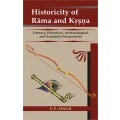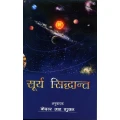Shop by Category

Islamic Tombs in India: The Iconography and Genesis of Their Design
Sold By:
DK Printworld
₹1,250.00
Short Description
The book studies the architecture and iconography of some 36 Islamic tombs belonging to the period ad 1230 to 1754. Abounding in line drawings, it makes examines the monuments’ size, plan and elevation, the techniques of their construction, masonry and artisanship, and the relevance of each monument in the overall scheme of Indo-Islamic architectural development.More Information
| ISBN 13 | 9788124602454 |
| Book Language | English |
| Binding | Hardcover |
| Total Pages | 335 |
| Edition | 1st |
| Release Year | 2004 |
| Publisher | D.K. Printworld Pvt. Ltd. |
| Author | Fredrick W. Bunce |
| GAIN | M5VSPY52LGC |
| Category | Arts Islam Ever Green Shelf Life |
| Weight | 1,400.00 g |
| Dimension | 14.00 x 22.00 x 1.80 |
Frequently Bought Together

This Item: Islamic Tombs in India: The Iconography and Genesi...
₹1,250.00
Sold by: DK Printworld
Choose items to buy together
ADD TO CART



This Item: Islamic Tombs in India: The Iconography and Genesis of Their Design
Sold By: DK Printworld
₹1,250.00
Historicity of Rama and Krsna: Literary, Historical, Archaeological and Scientific Perspectives
Sold By: DK Printworld
₹150.00
Total Price : ₹1,250.00
Product Details
The work by an Indological scholar who has studied different architectural traditions of the world covers the architecture and iconography of some 36 Islamic tombs in India spanning a period of over 500 years from c. ad 1230 to 1754. It begins with a brief historical background to the Islamic rule in northern India and a discussion on burial practices and tomb types of the time to further understanding of the underlying concept of construction and functions of the tombs. Abounding in numerous line drawings of plans and elevations, and figures, it examines the influence of different traditions — Buddhist and Hindu as well as other Asian and African and Mediterranean traditions — on evolution of the form of Islamic tombs. It makes a detailed examination of the Indo-Islamic tombs under consideration: their description, size, plan and elevation including the interior space and application of the mandala patterns over the tomb structures, the techniques of construction, masonry and artisanship employed in them. It explains the place and relevance of each monument in the overall scheme of Indo-Islamic architectural development and growth as well as the importance of each by itself. It delves into the religious, philosophical and mathematical bases of the architecture and its application to tomb-building. The research also involves a comparative study of Indo-Islamic tombs vis-a-vis other architectural marvels of the world — Islamic and non-Islamic. The book will be extremely relevant to scholars and students of Indian, particularly Indo-Islamic, iconography and those interested in Indo-Islamic cultural traditions in general.














